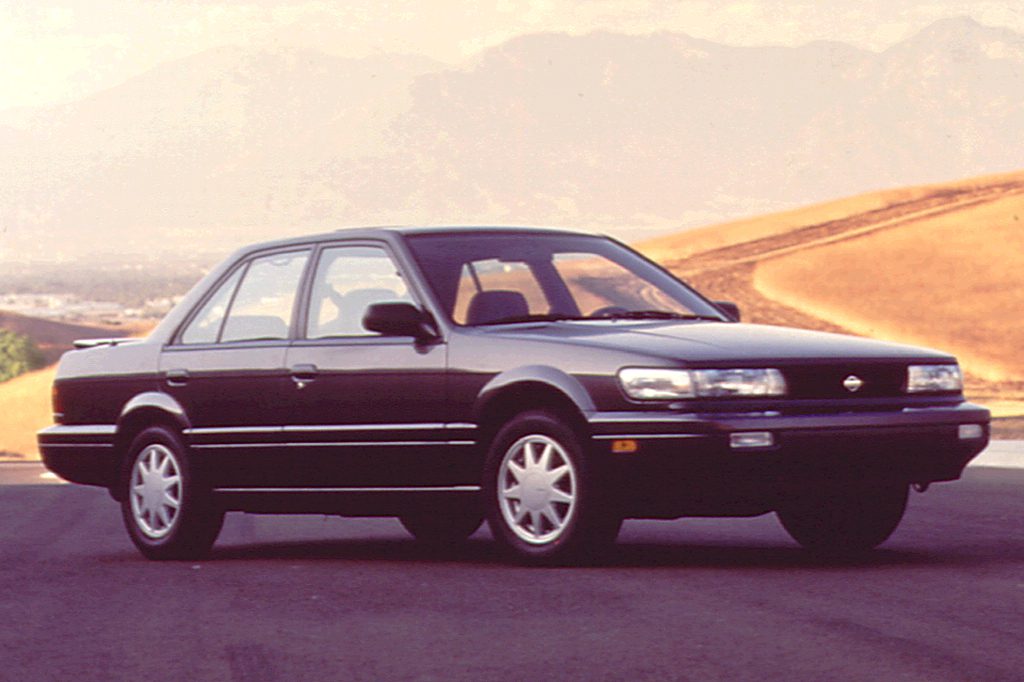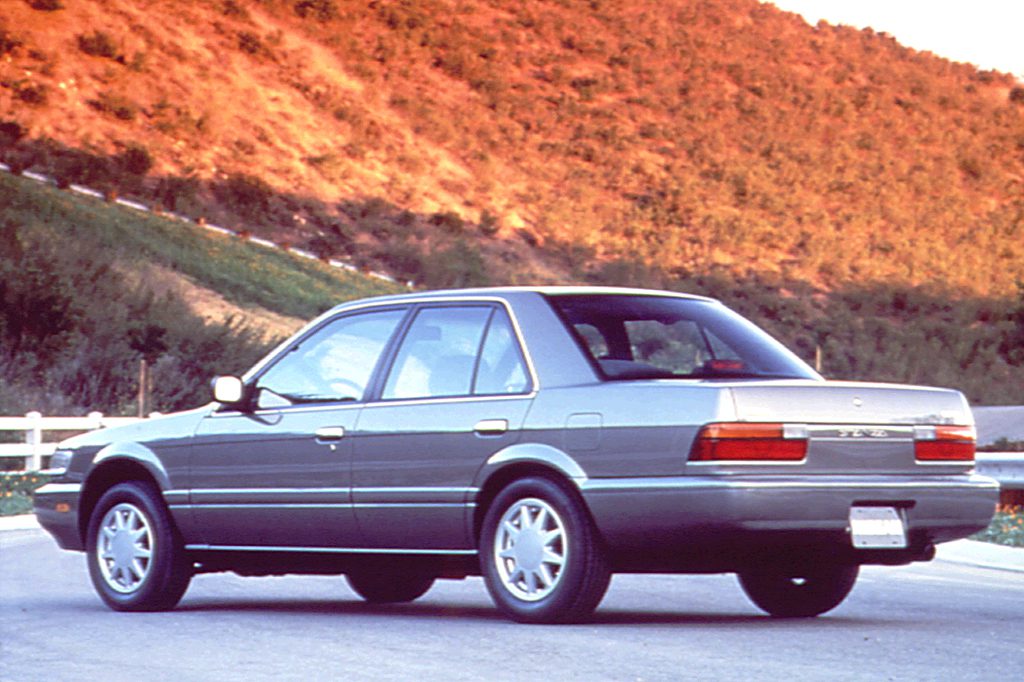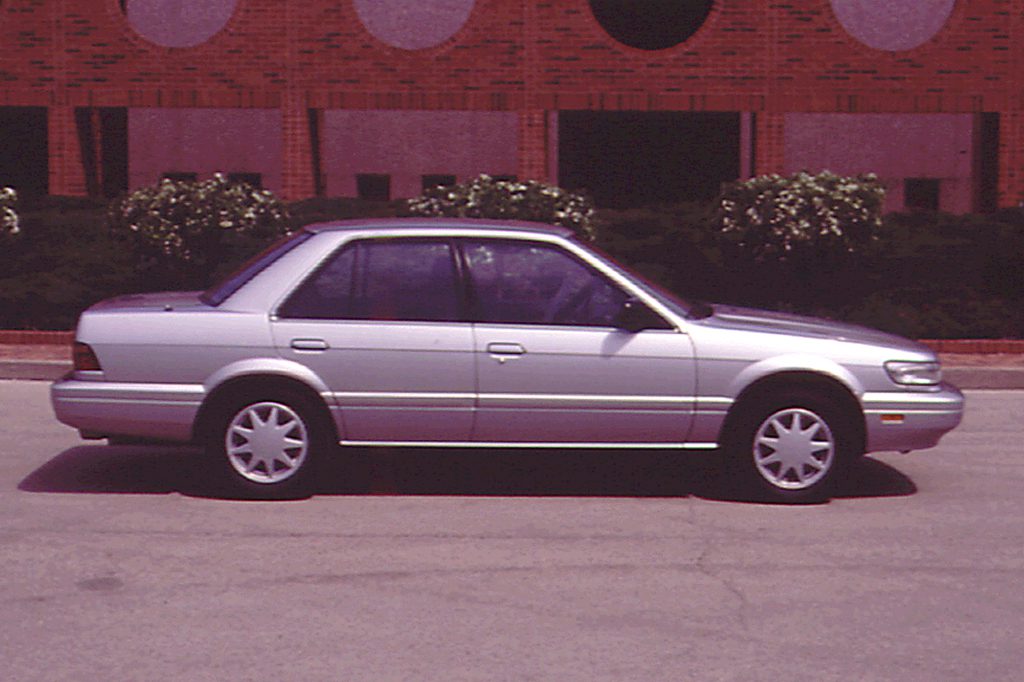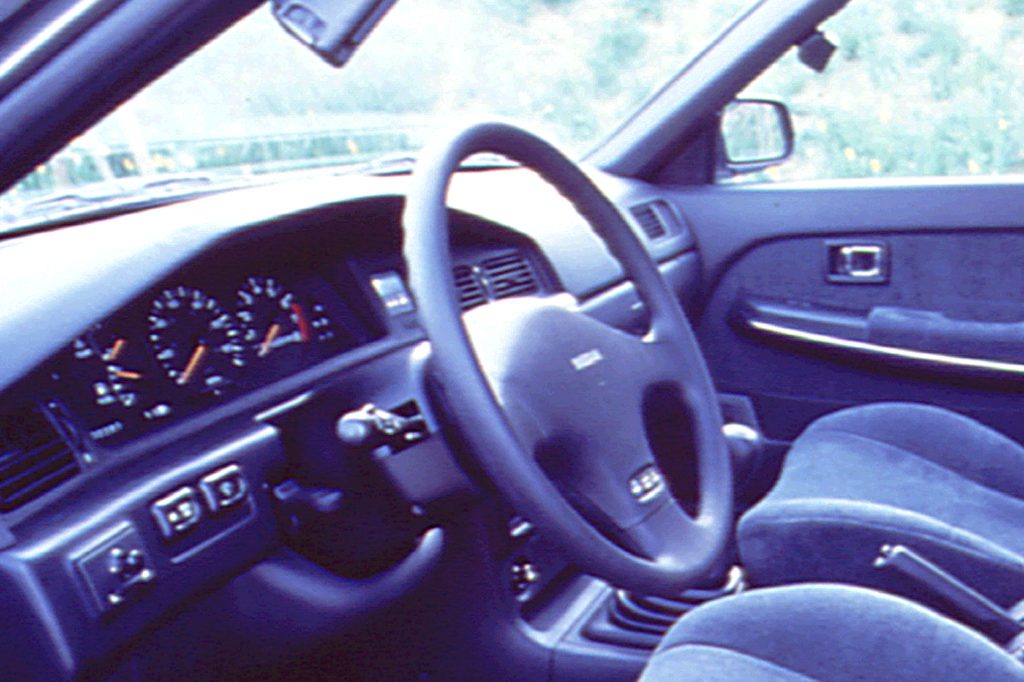| Compact car; Built in Japan |
|
|
| Good condition price range: $1,000 – $1,500* |

1992 Nissan Stanza SE

1990 Nissan Stanza GXE

1990 Nissan Stanza GXE

1990 Nissan Stanza interior

1990 Nissan Stanza interior
| Pros: |
|
| Cons: |
|
Stanza’s not as big inside as some competitors, such as the Toyota Camry, Hyundai Sonata, and Dodge Spirit/Plymouth Acclaim. Lack of a V6 engine also was considered a drawback.
Overview
The final generation of Nissan’s front-drive compact sedan got a big boost under the hood, as part of its 1990 redesign. A 138-horsepower, 2.4-liter four replaced the former 2.0-liter engine. Wheelbase was unchanged at 100.4 inches, but the sedan wore a more rounded profile and measured 2.1 inches longer overall than the square-rigged 1987-89 Stanza. Base XE and upscale GXE models were available, with either a 5-speed manual or 4-speed automatic transmission. Front-disc/rear-drum brakes were standard, but the GXE could be ordered with an all-disc brake package that included an antilock braking system.
Yearly Updates
| 1991 Stanza Only one change was evident on the 1991 Stanza: Power mirrors became standard on the base XE model. |
| 1992 Stanza A sporty SE model joined the Stanza lineup for 1992. Offering most of the features of the luxury-oriented GXE, the SE added a blackout grille, rear spoiler, fog lights, and leather-wrapped steering wheel and gearshift knob. Stanza was replaced by a brand-new Altima sedan for ’93. |
